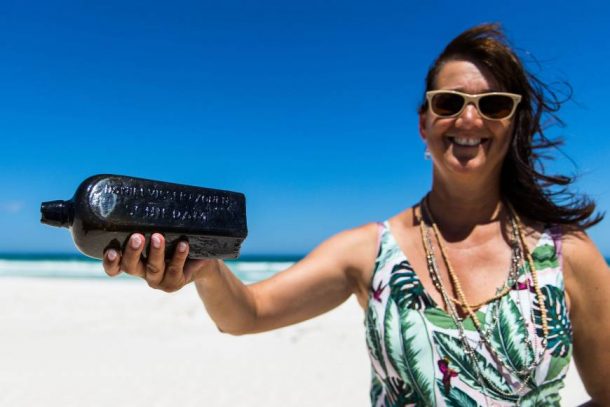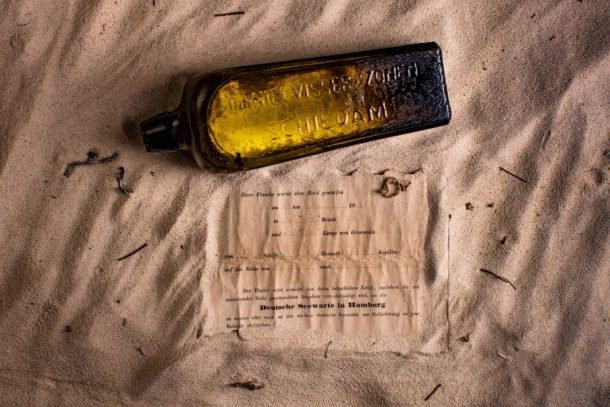132 years ago, a German science experiment started that has gotten an update now. A message in a bottle was found by a woman in Australia which began its journey in the 19th century when the German scientist was studying the shipping routes. Tonya Illman and a friend were waiting for their son’s car to be dug out from the soft sand when she noticed something in the sand. She told the press, “It just looked like a lovely old bottle so I picked it up thinking it might look good in my bookcase. My son’s girlfriend was the one who discovered the note when she went to tip the sand out. The note was damp, rolled tightly and wrapped with string. We took it home and dried it out, and when we opened it we saw it was a printed form, in German, with very faint German handwriting on it.”

After they discovered the bottle it became more of a family affair to deal with it. Her husband started researching online and discovered that it was part of an experiment which was run by an organization known as Deutsche Seewarte or the German Naval Observatory. The Deutsche Seewarte were trying to get a better understanding of the ocean’s currents to create more effective trade routes. Ships are still affected by the ocean currents. Oil tankers ride the Gulf Stream on northbound runs but avoid it when they return.
German ships, between 1864 and 1933, dropped thousands of bottles into the ocean and hoped that when they will be found and returned, it will provide them a better understanding of how the ocean worked. The messages in the bottles had date and coordinates of the message. They also had ship’s name, its home port information, and the route on which it had been sailing at that time.

The letter found inside the bottle reads, “This bottle was thrown overboard on 12th June 1886, in 32 degrees, 49 minutes latitude South and 105 degrees, 25 minutes longitude from Greenwich East. From: Barque ship Paula. Home (port): Elsfleth.” The captain’s name is not clear on the letter, however, the rest of the information is enough to verify the letter. Researchers at the museum verified the bottle, ship, handwriting, and the stationary used in the letter. The work was displayed in a paper which was posted on the museum’s website.
Seeing the letter’s condition, it is believed that the bottle would have hit the Australian coast within a year of being dropped in the water but it got buried in the sand after that. From thousands of bottles which were thrown 69 years ago, only 662 have been found. Before this bottle found by the Illman, the last one was found few months after the experiment ended. This bottle counts up to 663 number bottle. The Illman family has agreed to display the bottle for two years at Western Australia Museum.



